

PORTFOLIO

STUDIOS
STOOPSCAPES
how do you define community?
IRONBOUND AIR GARDEN
how can I make a building breathe?
ARECIBO HERBARIUM
how do I posture a building?
URBAN TROUT HATCHERY
can I formalize a supply chain?
OTHER WORKS
PORT NEWARK HOTEL
what is the right way to consume?
READING SPACES
how can you quantify vibes?
PROFESSIONAL
PROFESSIONAL WORK
what is helpful in a firm?
PORT NEWARK HOTEL
Group work / Role : Facade + Detail Development / Critic : Berardo Matalucci
Collaboration with ‘Eiwa Colburn, Lorennah Granfors, Jonah Johnson, Jagger Ugy
The class focused on the SD and DD part of the design process The building was inherited from another student’s studio project as part of the assignment, with the focus on how technical design can enhance the concept of the project.
The project is a commentary on the destructive scale of infrastructure required to sustain NYC consumption habits by placing a hotel in the heart of the Newark Port to showcase the shipping system as a spectacle for the guests.
How can you enhance a concept through technical assmebly?

[ East Facing Render ]
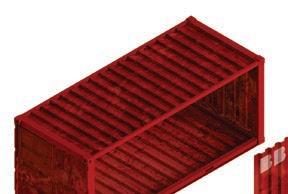


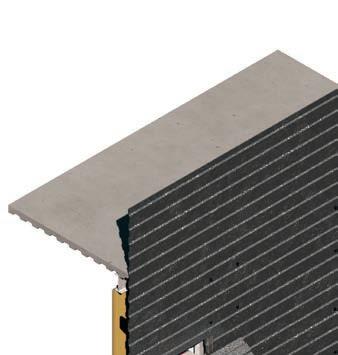



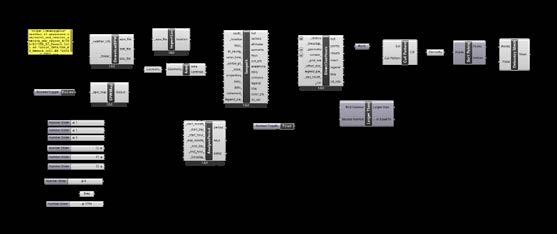
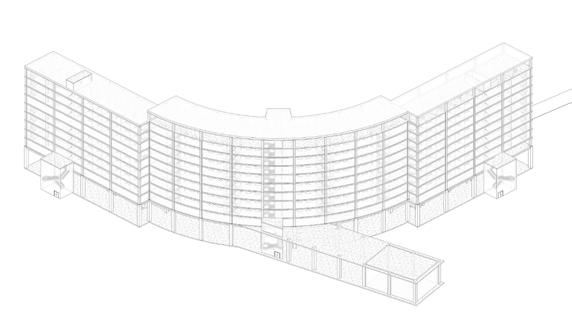
SYSTEM DESCRIPTIONS
PREFAB WALL OPAQUE PANEL CONCRETE WALL
[ Annual Solar Study ] [ Axon Facade Mapping ]

SOUTHEAST AXON
WT01
WT01
PREFAB WALL PANEL WITH LOW E GLASS
PREFAB WALL PANEL WITH DOUBLE GLAZING + ARGON GAS
GLAZING STOREFRONT
NORTHWEST AXON

[ Chunk Axon Render ]
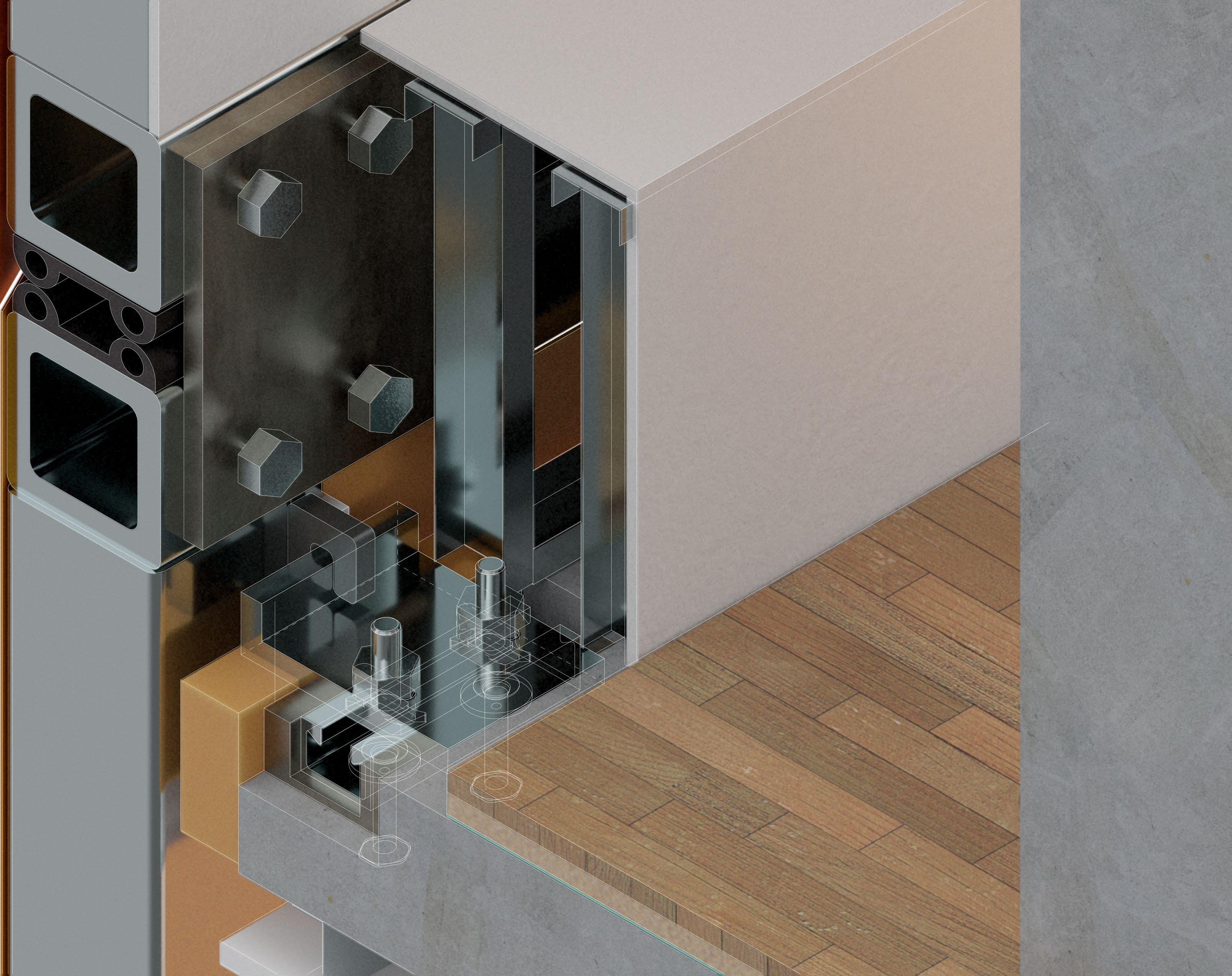
5/8” gyp finish
Halfan Curtain wall channel panel to panel lateral connection
6” steel studs with mineral
Halfan Curtain wall anchor rigid insulation smokeseal
LATERAL LOAD CONNECTION DOUBLE BULB GASKET
HALFAN C.W ANCHOR
HALFAN CHANNEL T BOLT
RECYCLED SHIPPING CONTAINER
RECYCLED SHIPPING
ALUMINUM WINDOW MULLION
LOW E DOUBLE PANE GLASS
5/8” gyp finish
ALUMINUM JAMB
HSS 5” steel skelelton
rubber gasket seal
6” steel studs with mineral wool
5/8” plywood sheathing
4” z-girts with mineral wool
6" STUD SMOKE SEAL
5/8" GWB
[ Panel to Slab detail ]

recycled corrugated shipping container
rainscreen
prefabricated punch windows
[ Exploded Axon Single Panel ]
computational workflow
Early Concept ]


SKIN

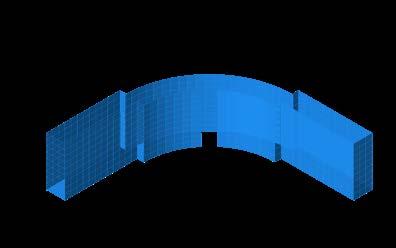
PANELIZATION
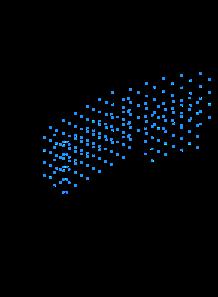
LOCATION

manual model skin and divide surfaces
panelize each surface with goal of finding optimized “one size fits all”
extract panel centroids and vector normals to input new facade panel design



PATTERNING

By establishing a grasshopper script early in the project, our team was able to rapidly change and design a unitized modular facade panel allowing us to design from the detail scale and assess how the facade scale is affected when changing designs on a singular scale

cull pattern designs rhythm of facade assign each facade panel type to unique cull pattern
orient panels along extracted vector normals
READING SPACES
Individual / Spatial Design + Computer Vision / Critic : Zachary White
When people walk into a room, people can sense the “social atmosphere” or “vibes” of a place.
The project seeks to visualize the ebbs and flows of social space within architecture studio room. The project focused on the entrance to the studio as the main threshold for quantifying of the mindset one holds toward oneself. I explored how to measure the emotional being of a collective class through a python script that can be visualized into a drawing taking into account who enters the space contributing to the collective vibes of the studio space.
How can I visualize the collective emotion of a class?

import cv2 import numpy as np import tensorflow as tf from datetime import datetime from tensorflow.keras.models import Model from tensorflow.keras.layers import Dense, GlobalAveragePooling2D from tensorflow.keras.applications.densenet import DenseNet201, preprocess_input import os
# Ensure the directory exists log_dir = r”C:\Users\12483\Downloads\ADR EMOTION DETECTION TEXT FILES\TEXT” os.makedirs(log_dir, exist_ok=True)
# Path to save the log file log_file_path = os.path.join(log_dir, “emotion_log.txt”)
# Load DenseNet201 pre-trained on ImageNet without the top layer base_model = DenseNet201(weights=’imagenet’, include_top=False, input_shape=(224, 224, 3)) x = base_model.output x = GlobalAveragePooling2D()(x) x = Dense(1024, activation=’relu’)(x) predictions = Dense(7, activation=’softmax’)(x) model = Model(inputs=base_model.input, outputs=predictions)
# Load Haar Cascade for face detection face_cascade = cv2.CascadeClassifier(cv2.data.haarcascades + ‘haarcascade_frontalface_default.xml’)
# Camera settings
FRAME_RATE = 1 DISPLAY_TIME = 2
# Open a text file to log emotions with open(log_file_path, “a”) as emotion_log_file: def process_webcam_feed(): cap = cv2.VideoCapture(0) prev_frame_time = 0 emotion_display_time = 0 last_emotion = None while True: ret, frame = cap.read() if ret:
new_frame_time = cv2.getTickCount() gray = cv2.cvtColor(frame, cv2.COLOR_BGR2GRAY) faces = face_cascade.detectMultiScale(gray, scaleFactor=1.1, minNeighbors=5, minSize=(30, 30)) for (x, y, w, h) in faces: cv2.rectangle(frame, (x, y), (x+w, y+h), (255, 0, 0), 2) face_color = frame[y:y+h, x:x+w] resized_face = cv2.resize(face_color, (224, 224)) current_emotion = detect_emotion(resized_face) if current_emotion != last_emotion and (new_frame_time - emotion_display_time) / cv2.getTickFrequency() > DISPLAY_TIME: last_emotion = current_emotion emotion_display_time = new_frame_time emotion_log_file.write(f”{datetime.now()}: {last_emotion}\n”) emotion_log_file.flush()
cv2.putText(frame, f’Emotion: {last_emotion}’, (10, 50), cv2.FONT_HERSHEY_SIMPLEX, 1, (255, 255, 255), 2, cv2.LINE_AA) cv2.imshow(‘Video’, frame)
if cv2.waitKey(1) & 0xFF == ord(‘q’): break else: break cap.release() cv2.destroyAllWindows()
def prepare_image(img_array): img_tensor = np.expand_dims(img_array, axis=0) img_tensor = preprocess_input(img_tensor) return img_tensor
def detect_emotion(img_array): img_tensor = prepare_image(img_array) preds = model.predict(img_tensor) emotions = [‘angry’, ‘disgust’, ‘fear’, ‘happy’, ‘sad’, ‘surprise’, ‘neutral’] return emotions[np.argmax(preds)]
def main(): process_webcam_feed()
if __name__ == ‘__main__’: main()

[ Proposal Section ]

The project seeks to visualize the ebbs and flows of social space within architecture studio room.
The project focused on the entrance to the studio as the main threshold for quantifying of the mindset one holds toward oneself. I explored how to measure the emotional being of a collective class through a python script that can be visualized into a drawing taking into account who enters the space contributing to the collective vibes of the studio space. [ Precedent

Architectural Drawing and Representation II
import cv2 import numpy as np import tensorflow as tf from datetime import datetime from tensorflow.keras.models import Model from tensorflow.keras.layers import Dense, GlobalAveragePooling2D from tensorflow.keras.applications.densenet import DenseNet201, preprocess_input import os
# Ensure the directory exists log_dir = r”C:\Users\12483\Downloads\ADR EMOTION DETECTION TEXT FILES\TEXT” os.makedirs(log_dir, exist_ok=True)
# Path to save the log file log_file_path = os.path.join(log_dir, “emotion_log.txt”)
jupyter notebook
# Load DenseNet201 pre-trained on ImageNet without the top layer base_model = DenseNet201(weights=’imagenet’, include_top=False, input_shape=(224, 224, 3)) x = base_model.output
write text file from face recognition
x = GlobalAveragePooling2D()(x) x = Dense(1024, activation=’relu’)(x) predictions = Dense(7, activation=’softmax’)(x) model = Model(inputs=base_model.input, outputs=predictions)
1. 2. 3. 4. 5. python script 1080P@60FPS external camera
import text file into grasshopper
visualization in rhino space
# Load Haar Cascade for face detection face_cascade = cv2.CascadeClassifier(cv2.data.haarcascades + ‘haarcascade_frontalface_default.xml’)
# Camera settings FRAME_RATE = 1
DISPLAY_TIME = 2
# Open a text file to log emotions with open(log_file_path, “a”) as emotion_log_file:
def process_webcam_feed(): cap = cv2.VideoCapture(0) prev_frame_time = 0 emotion_display_time = 0 last_emotion = None
while True: ret, frame = cap.read() if ret: new_frame_time = cv2.getTickCount() gray = cv2.cvtColor(frame, cv2.COLOR_BGR2GRAY) faces = face_cascade.detectMultiScale(gray, scaleFactor=1.1, minNeighbors=5, minSize=(30, 30))
for (x, y, w, h) in faces: cv2.rectangle(frame, (x, y), (x+w, y+h), (255, 0, 0), 2) face_color = frame[y:y+h, x:x+w] resized_face = cv2.resize(face_color, (224, 224)) current_emotion = detect_emotion(resized_face)
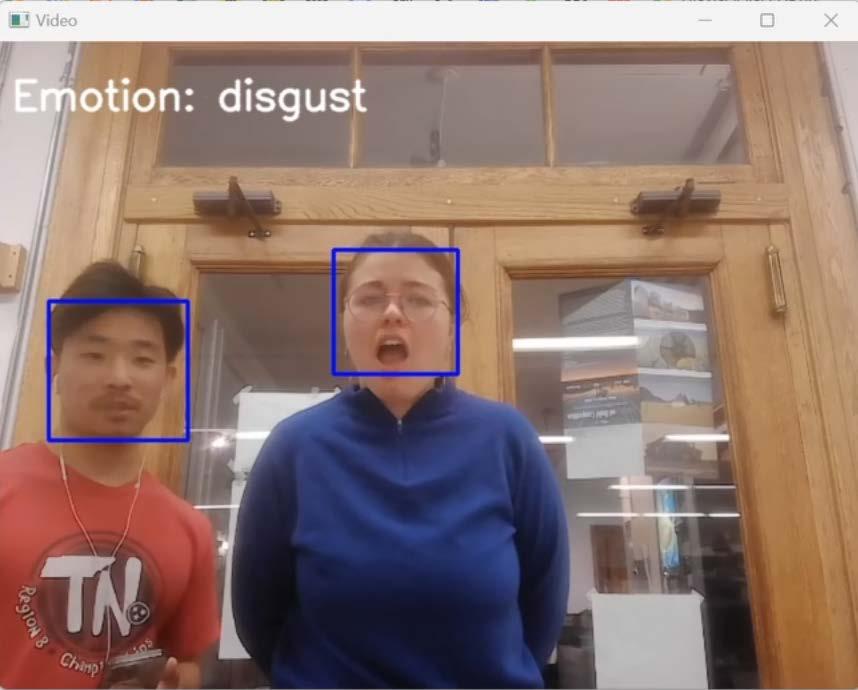
if current_emotion != last_emotion and (new_frame_time - emotion_display_time) / cv2.getTickFrequency() > DISPLAY_TIME: last_emotion = current_emotion emotion_display_time = new_frame_time emotion_log_file.write(f”{datetime.now()}: {last_emotion}\n”) emotion_log_file.flush()
cv2.putText(frame, f’Emotion: {last_emotion}’, (10, 50), cv2.FONT_HERSHEY_SIMPLEX, 1, (255, 255, 255), 2, cv2.LINE_AA) cv2.imshow(‘Video’, frame)
if cv2.waitKey(1) & 0xFF == ord(‘q’): break else: break cap.release() cv2.destroyAllWindows()
def prepare_image(img_array):
img_tensor = np.expand_dims(img_array, axis=0) img_tensor = preprocess_input(img_tensor) return img_tensor
def detect_emotion(img_array):

img_tensor = prepare_image(img_array) preds = model.predict(img_tensor) emotions = [‘angry’, ‘disgust’, ‘fear’, ‘happy’, ‘sad’, ‘surprise’, ‘neutral’] return emotions[np.argmax(preds)] def main(): process_webcam_feed()
if __name__ == ‘__main__’: main()

[ emotion recognition python script video feed ]
text file python script within grasshopper script
2024-04-22 22:16:54.965158: sad 2024-04-23 02:42:04.611959: sad
2024-04-23 02:42:34.004268: fear
2024-04-23 02:42:36.137816: sad 2024-05-09 10:54:45.513953: surprise
2024-05-09 10:54:46.243151: disgust
2024-05-09 10:54:48.126227: surprise
2024-05-09 10:54:54.075061: disgust
2024-05-09 10:54:56.098458: surprise
2024-05-09 10:54:58.906304: fear
2024-05-09 10:55:01.105750: disgust
2024-05-09 10:55:21.430485: fear
reads every new emotion registered on video feed
# Dictionary mapping emotions to integers emotion_to_int = { ‘angry’: -2, ‘disgust’: -1, ‘fear’: -1, ‘happy’: 2, ‘sad’: -1, ‘surprise’: 1, ‘neutral’: 0

visualization changes real time with color scale and y location

[ Reading a Room output visual in rhino ] [ grasshopper script visual ]

STOOPSCAPES
Group work / Role : Designer / Critic : Erica Goetz
Collaboration with Zach Beim
The building resides in Harlem, a historically rich neighborhood characterized by the agglomeration of diverse cultures. The building concept captures the spatial characteristics of the “Stoop or porch” as a threshold that connects communities together by providing a space for casual social interaction.
How can architecture strengthen the sense of a community?


[ Apartment render from 124st, Harlem NY ]

[ Floor Plate Types Diagram ]
[ Axon view South East ]
23’

The formal approach was to focus on a L shaped bar that would jog on its ends. The form gave us an activated hallway along with atrium spaces that differ according to stacking orders of floor plate types.
[ Plan Level 8 Floor Type C ]


TYPE #145188
[ grasshopper script logic ]

After designing the floor plate types, we analyzed how specific combinations created unique void spaces that snaked through the building.
[ Massing Study derived from gh script ]

[ Diagram of possible iterations ]
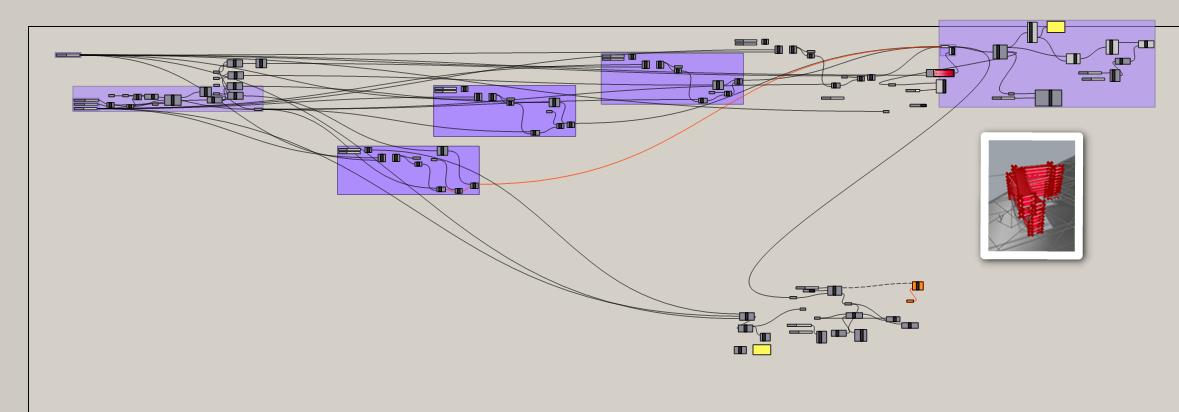
[ Grasshopper Script ]
MOST PUBLIC

[ Unit Plan ]
The conception of a community is embedded in all scales of the building. The unit plan scale focuses on a gradient of public to private .


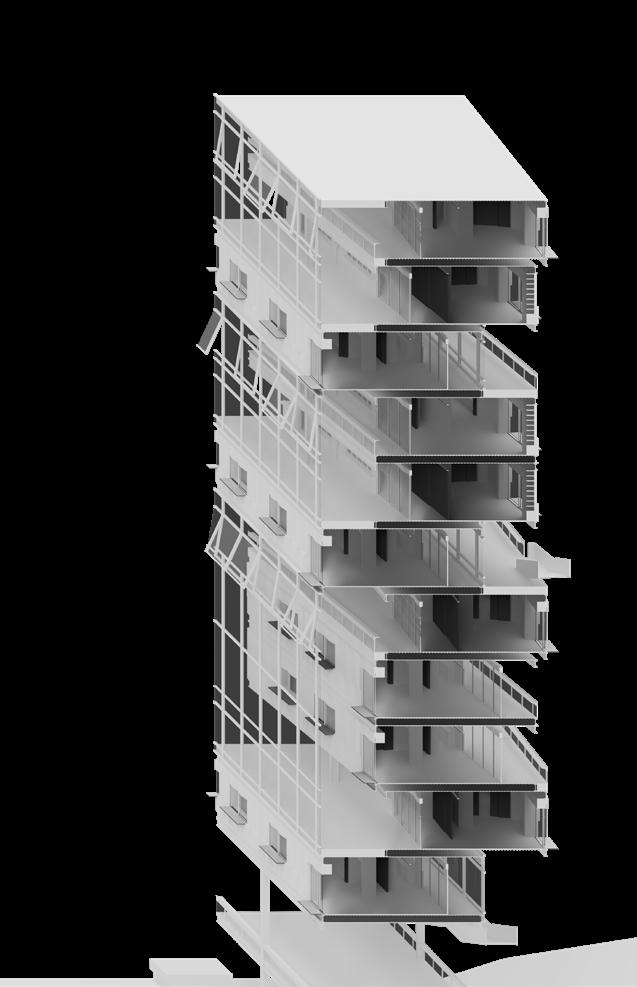

The furniture wall study model was the anchoring point for the unit plan concept . We questioned how the design of the building can be spatially efficient . By embedding a desk into the thickness of the wall, we realized the wall can serve beyond just a seperation of inside and outside.
[ Unit Plan Circulation study ]
[ Furniture Wall Study Model ]
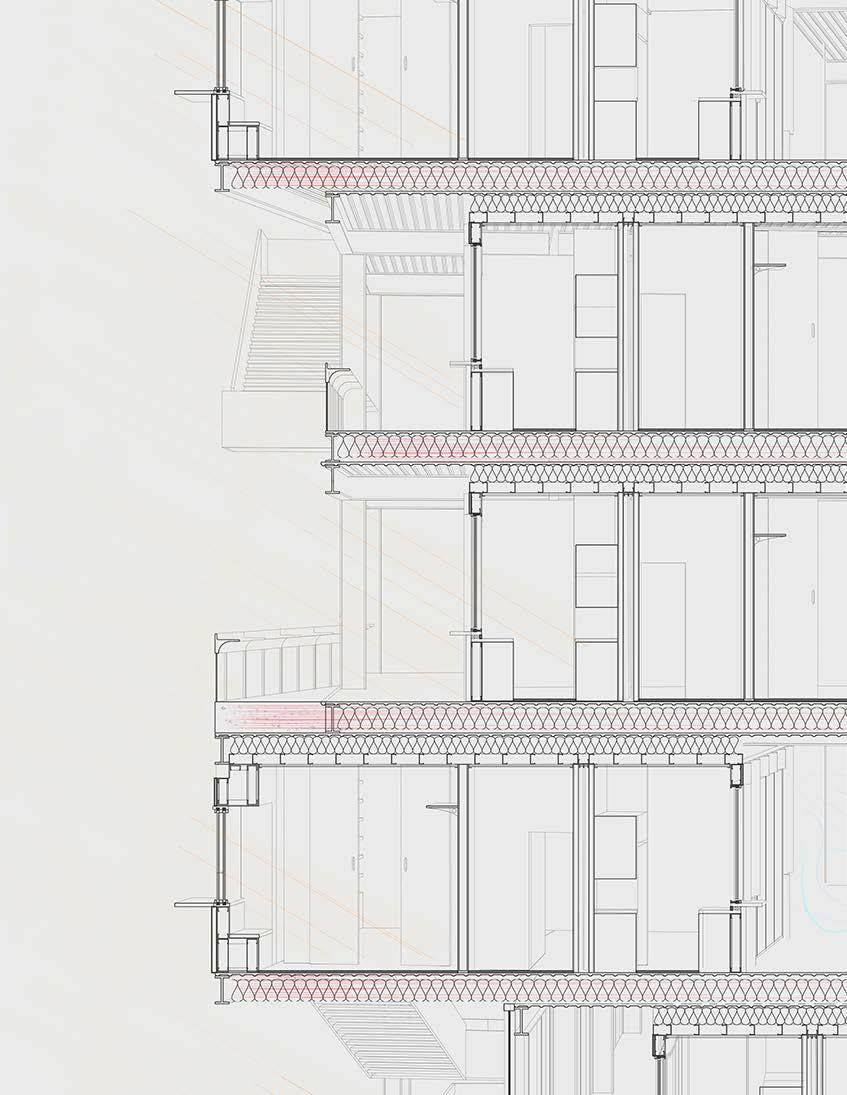

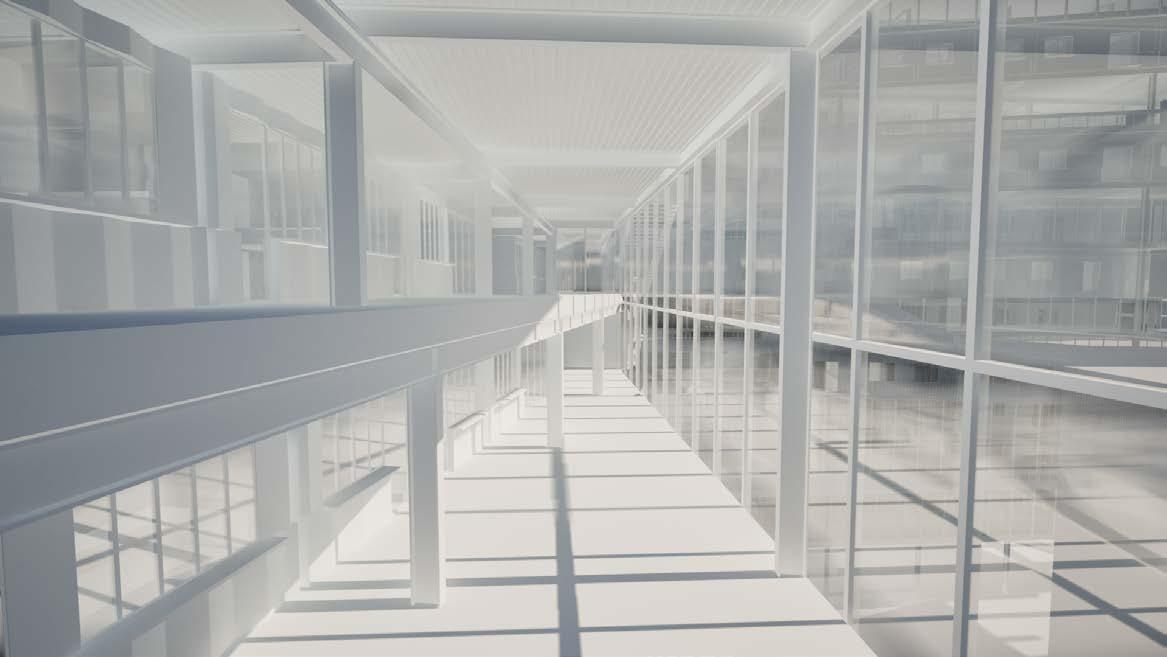
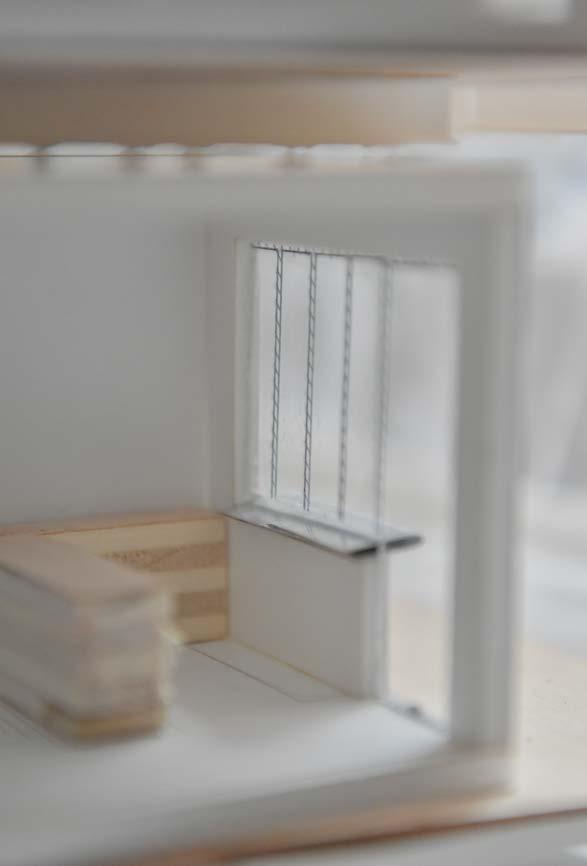


Vierendeel Truss Structure
Prefabricated Apt Unit
Precast Wall system
IRONBOUND AIR GARDEN

The strucutral intervention intervenes the on going damage of pollution and hiding that is burdening the Ironbound air by actively archiving modern pollutants through its facade while serving the community as a gathering place.
How can you make a building breathe through passive environmental design?
Individual / Community Air Filter / Critic : Maria Linares Trelles
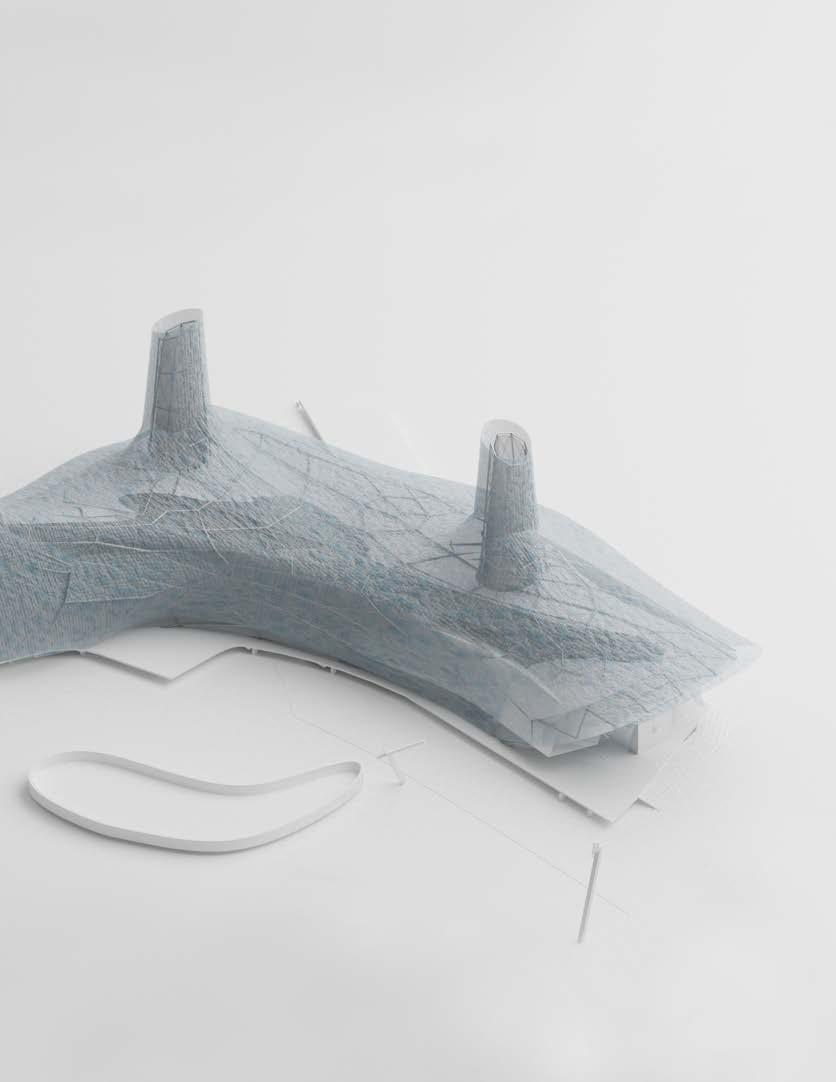
[ Community Center Axon ]
The map intends to display the amount of waste the incinerator must deal with and prompt readers to think of the biological toll it has on the community living near the incinerator.
The map also represents the location of key decision makers that permitted the construction of the incinerator. This is to point out how the community that it was placed in were not represented.


SYSTEMATIC ERASURE OF PROCESS

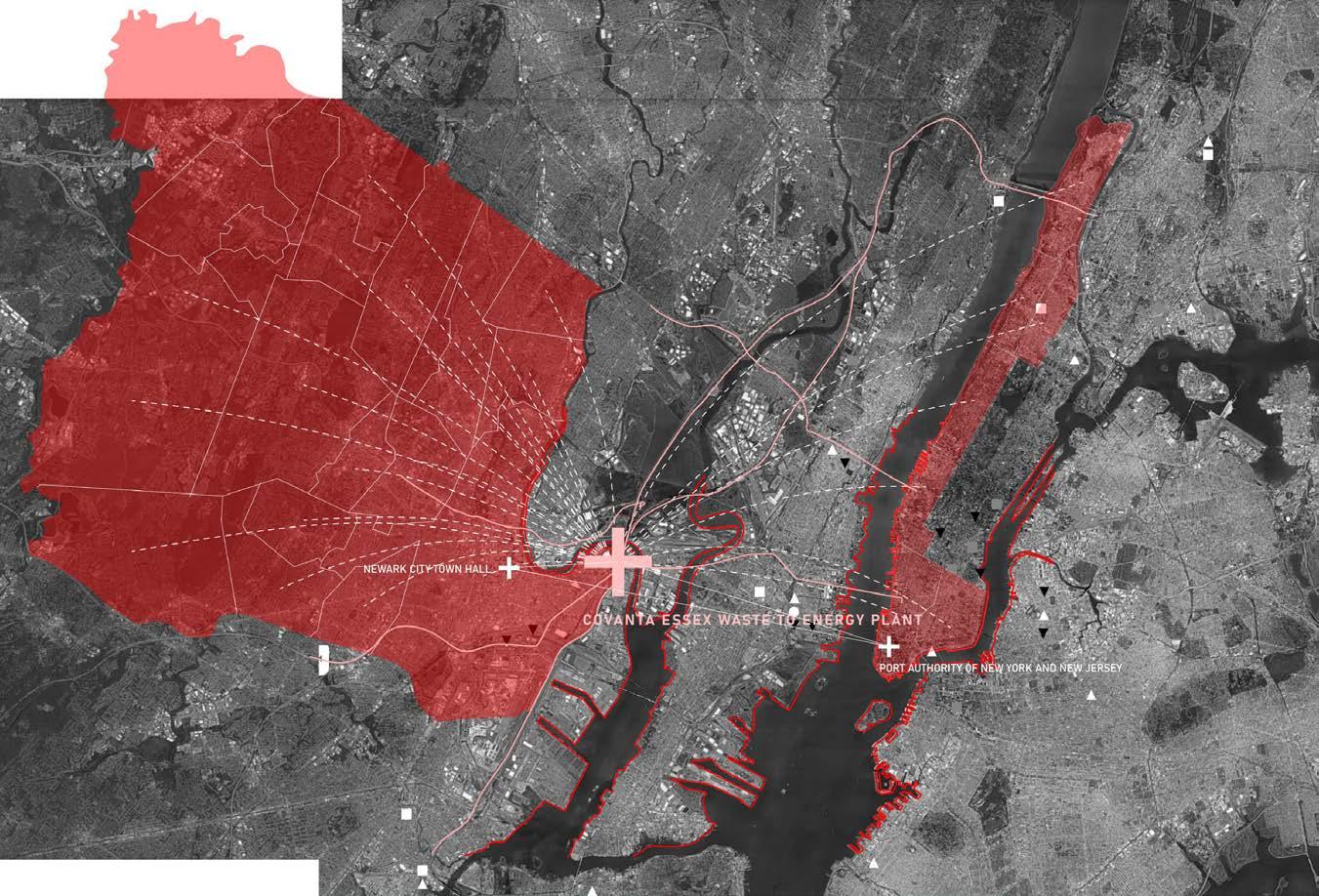
[ Incineration process and its side effects ]
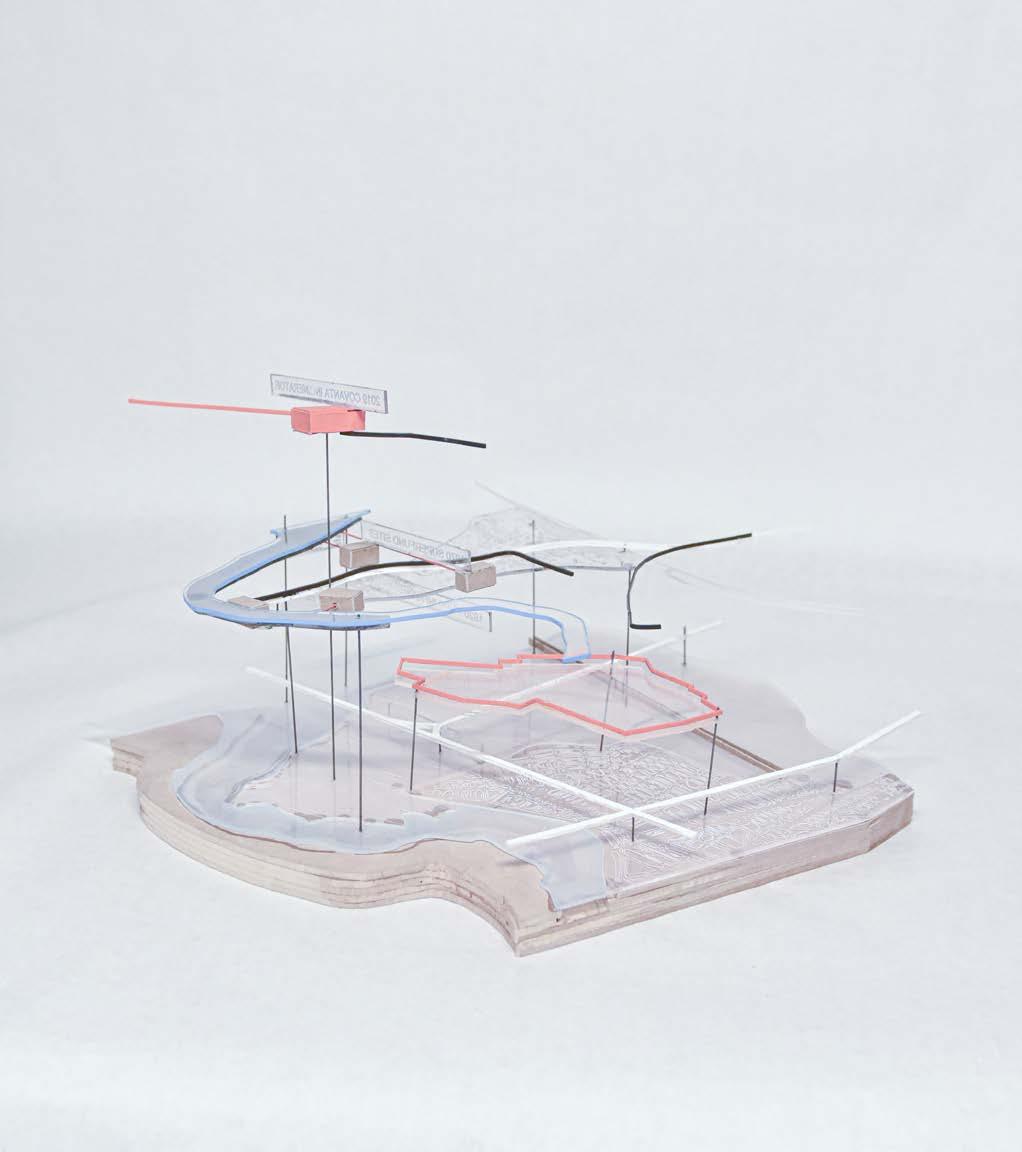
[ Site analysis Model mapping ]
IRONBOUND AIR GARDEN
AIR PURFICATION COMMUNITY CENTER AIR SENSOR |
DETAIL 3
ZONE 1
ELECTROSTATIC NON-WOVEN
AIR FILTER
STEEL TRUSS
ETFE INTERIOR LINING
REFER TO DETAIL 2
F2
F3
ALGAE TUBES









ARECIBO HERBARIUM
Individual / Biological Observatory / Critic : Kevin Moultrie-Daye
The building continues the site’s original identity as a place of research and observation within the natural environment. The building is a native fauna research and educational facility that studies the biodiversity of the rich Puerto Rican forest.
How does the form of the building explore the identity of the building?


[ Lobby View Interior Render ]

1
2
3 4 5
[ Iterative Study Massing Models ]
Q : How can I move people so that they experience the full extent of Puerto Rico’s natural landscape?


I wanted the building to have two “necks” two floors decide if you look up or down

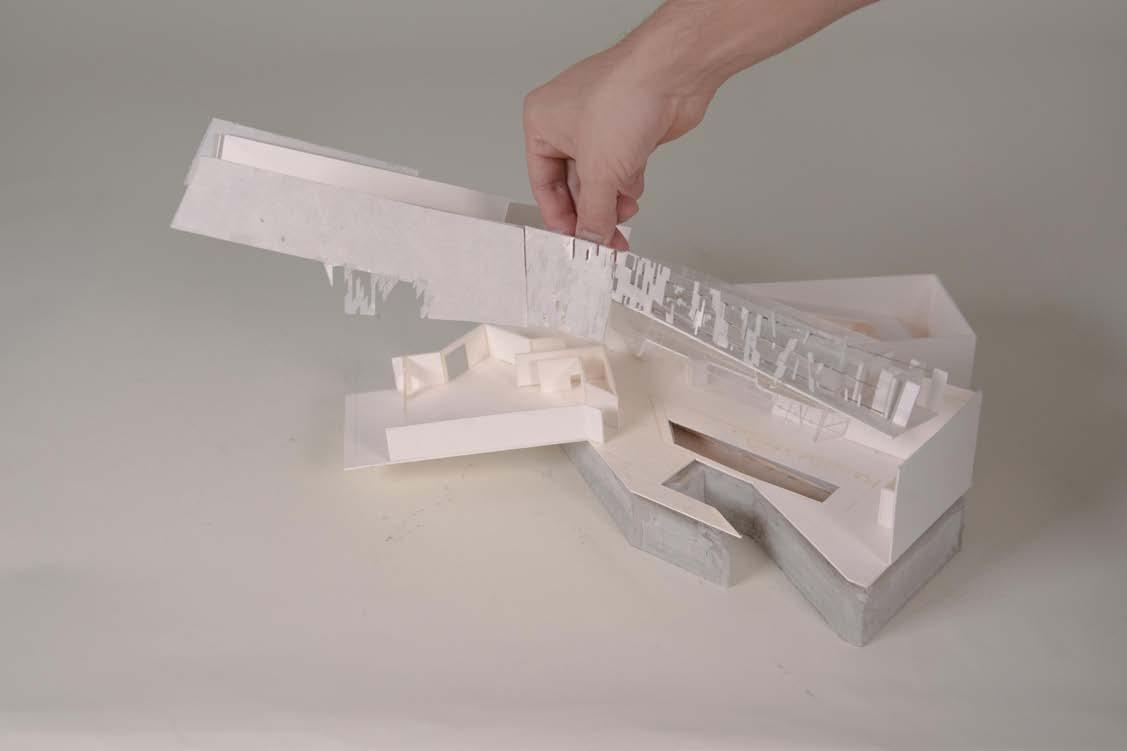
[ Presentation Model ]
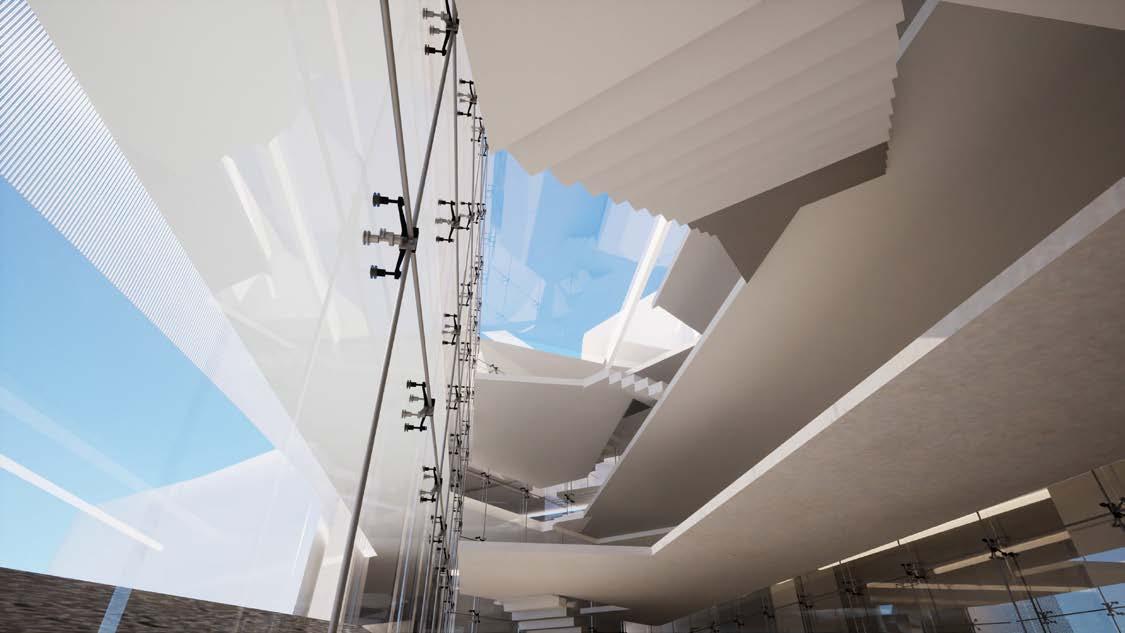



URBAN TROUT HATCHERY
Individual / Role : Designer / Critic : Zain Abuseir
What is the conversion process from a live fish to a commodity on a plate?






Program Sketch ]
The building continues the site’s original identity as a place of research and observation within the natural environment. The building is a native fauna research and educational facility that studies the biodiversity of the rich Puerto Rican forest.




[ Restaurant Mapping Feasibility Study ]
Q : Would there be enough demand for fresh trout in the area and would this be financially justifiable?

Formalization of flows
The building began as a core concept of formalizing the sequences and processes of the entire audience of the building
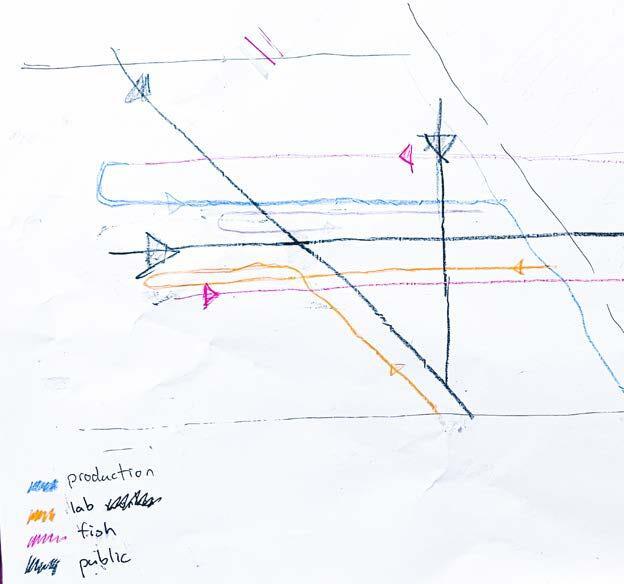

[ Longitudinal Section | My intent with the building was to create

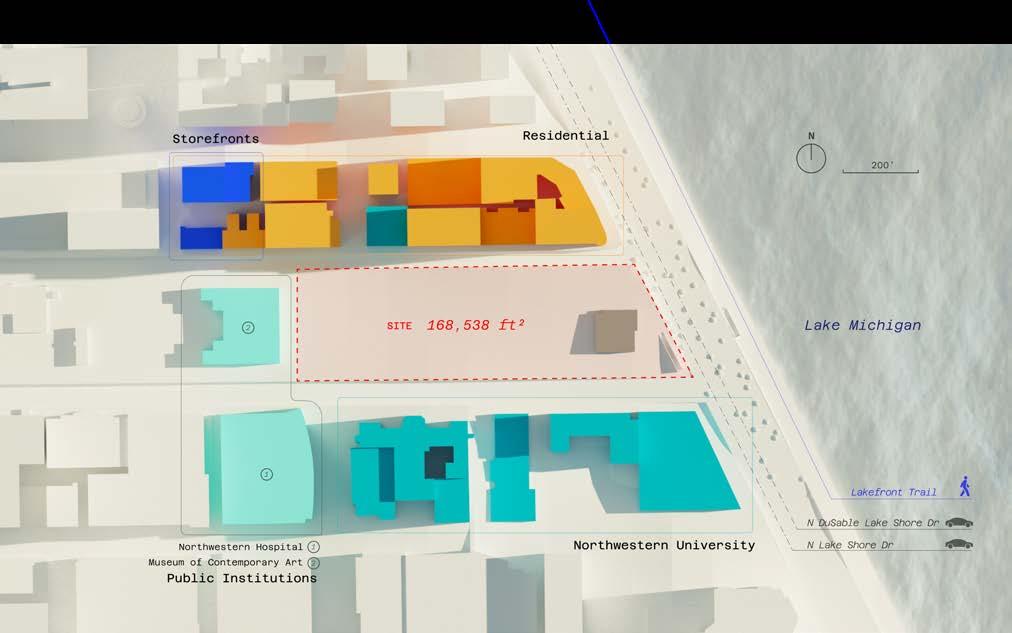

create a bridge that would connect pedestrians to the lakefront. ]
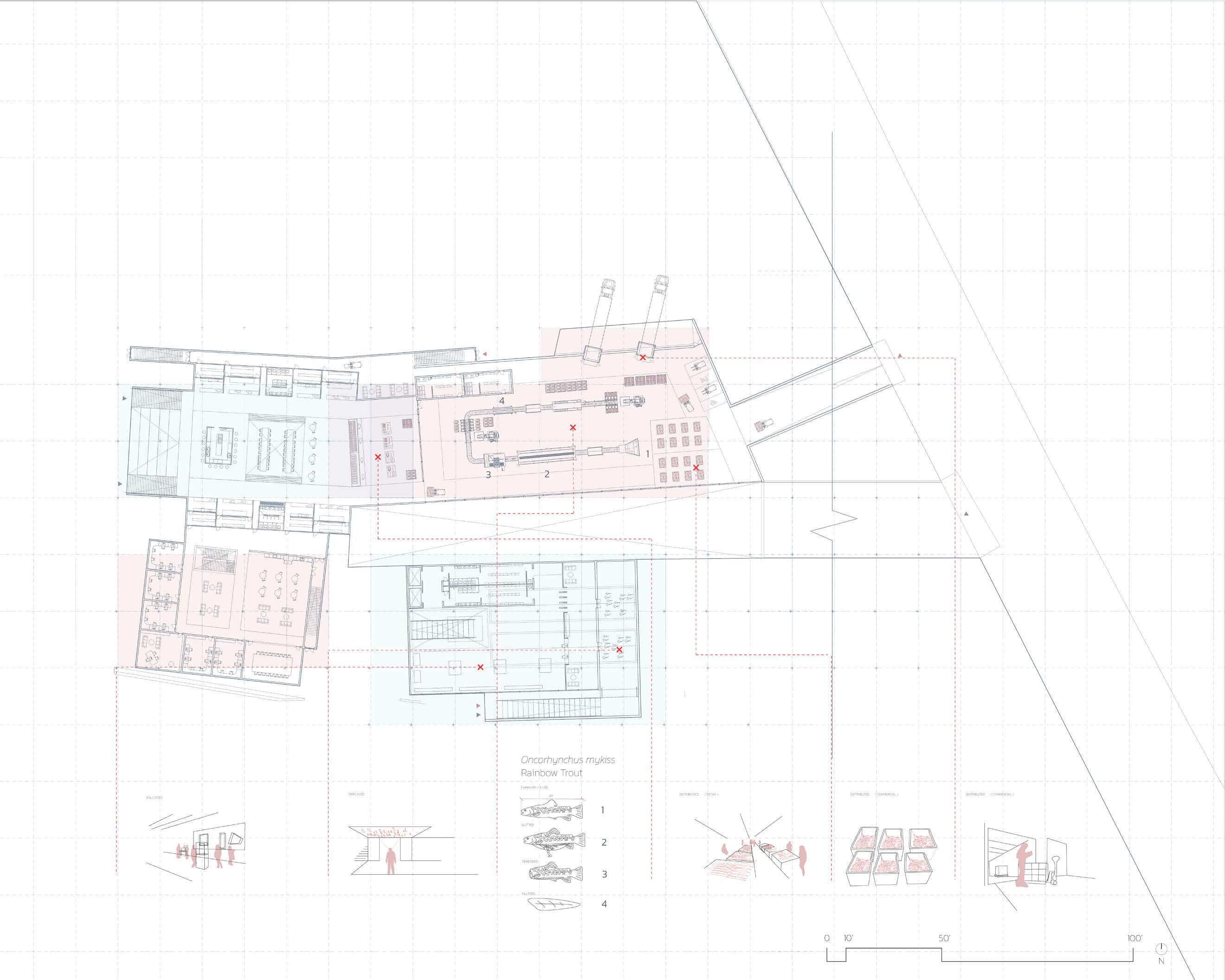
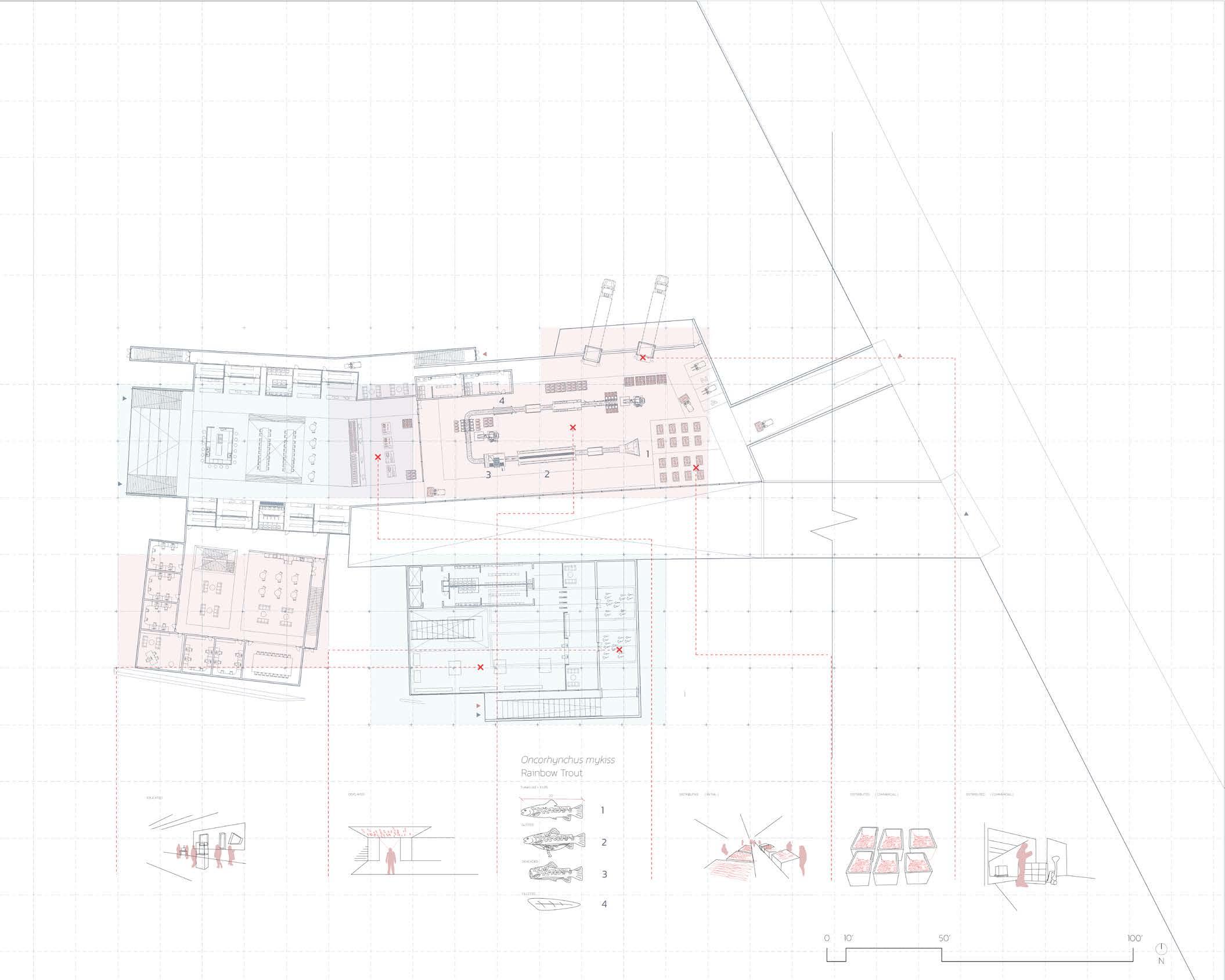

PROFESSIONAL
Architectural Intern / Design + Drafting / Supervisor :
Josh Klooster
Focusing on the narrative of the up and coming basketball team at Florida Atlantic University, we decided to target a possible pursuit by upgrading the old stadium by building a new addition that will better serve spectators and their experience entering the stadium venue on gameday through the use of portals.
When entering the space, the lobby showcases the history of the FAU basketball team. Doing research on the athletic director of FAU, we understood he wanted to win over resident support outside of the alumni group as most people in the area were retirees with different alma maters.
How can you incorporate market forces and client ambitions into the design of sports architecture?
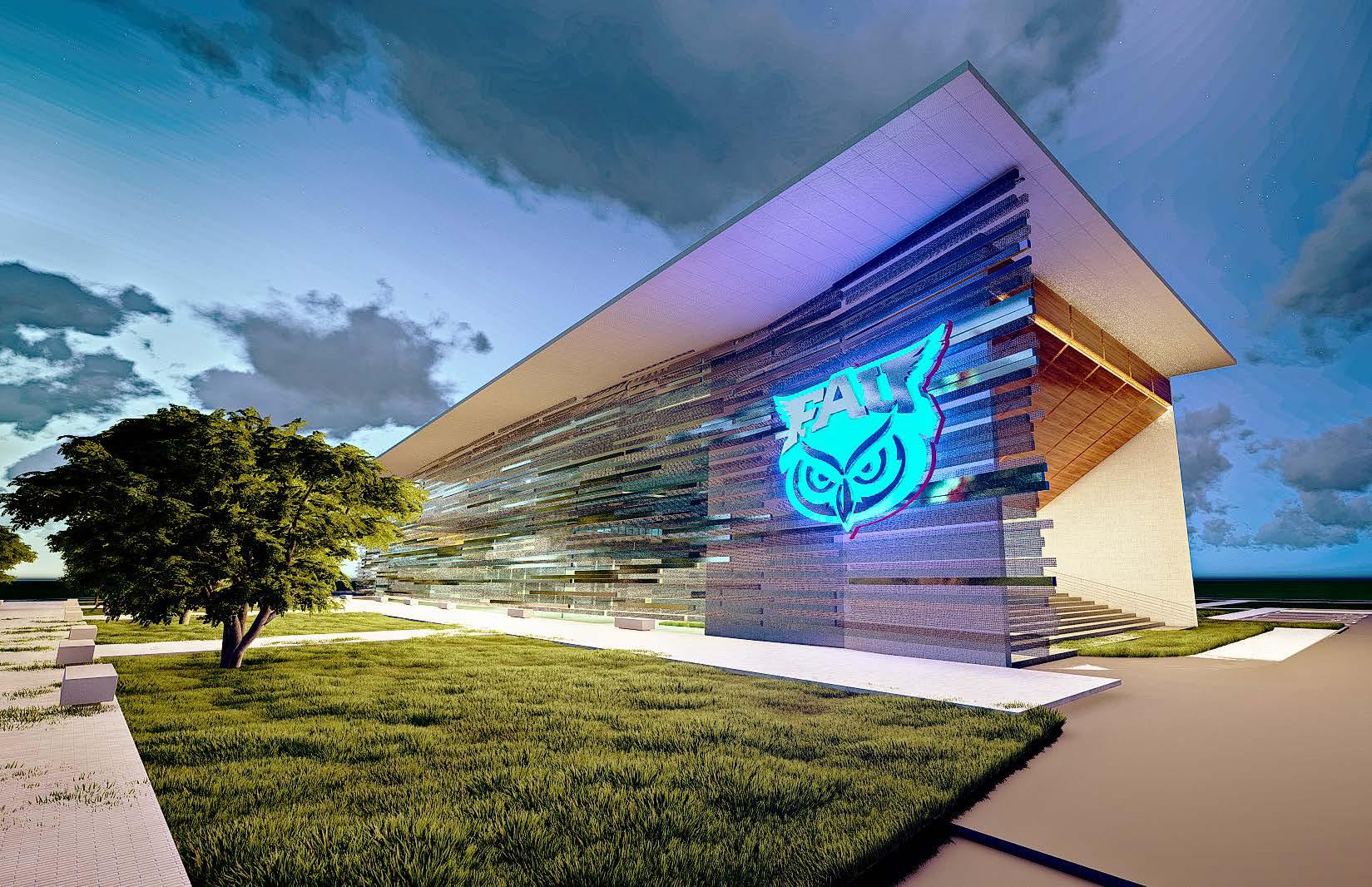

[ Interior Render Pursuit Proposal ]
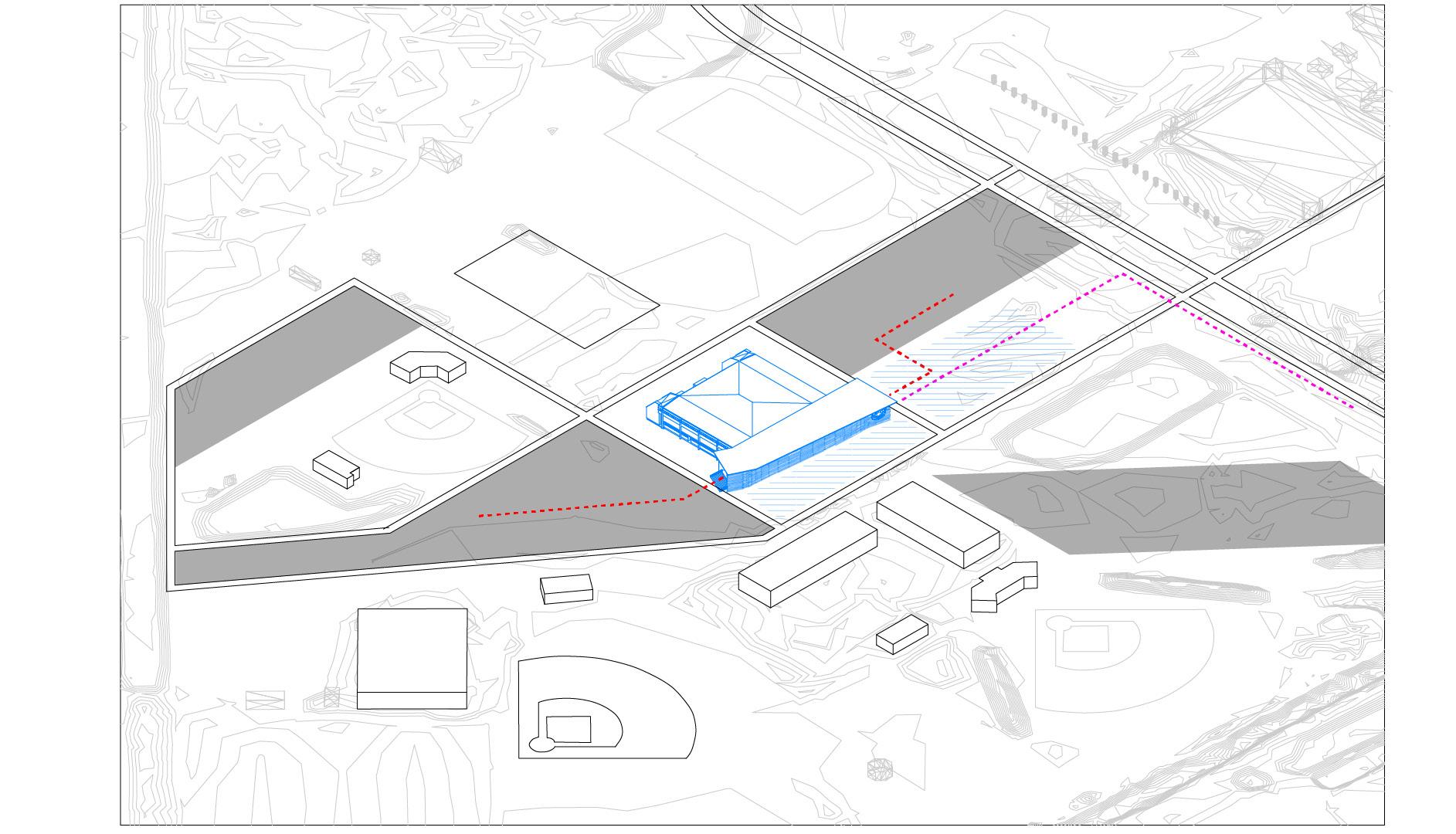
[ Pursuit Proposal Model ]
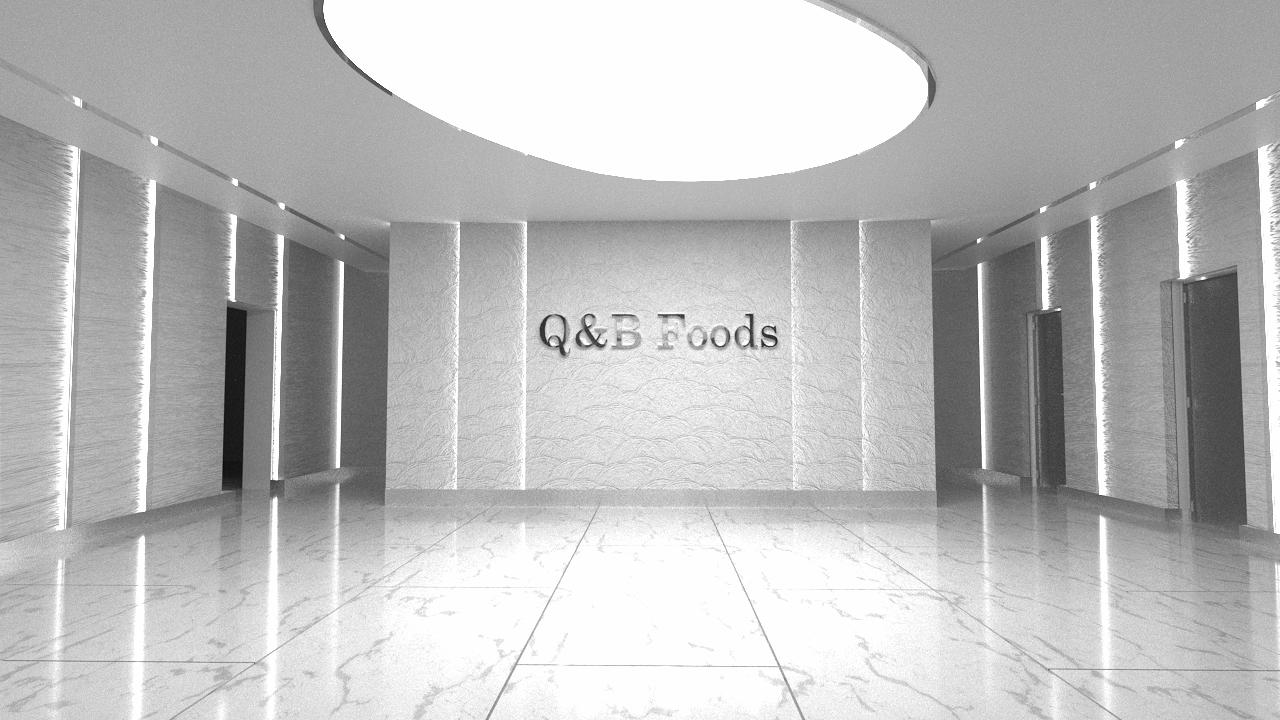
[ Factory Lobby Render ]


LOWER BOWL ANALYSIS






Aug 2023


33" TREADS


[ Toledo Premium Suite Render ]
[ Factory Lobby Render Option 2 ]
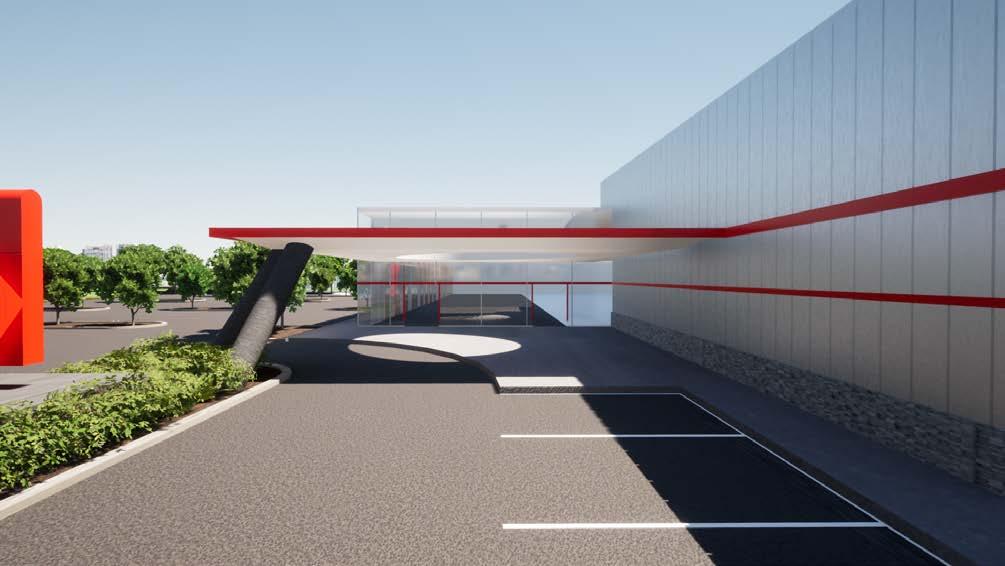

[ Pursuit Proposal Model ]
[ Factory Entrance Render ]


